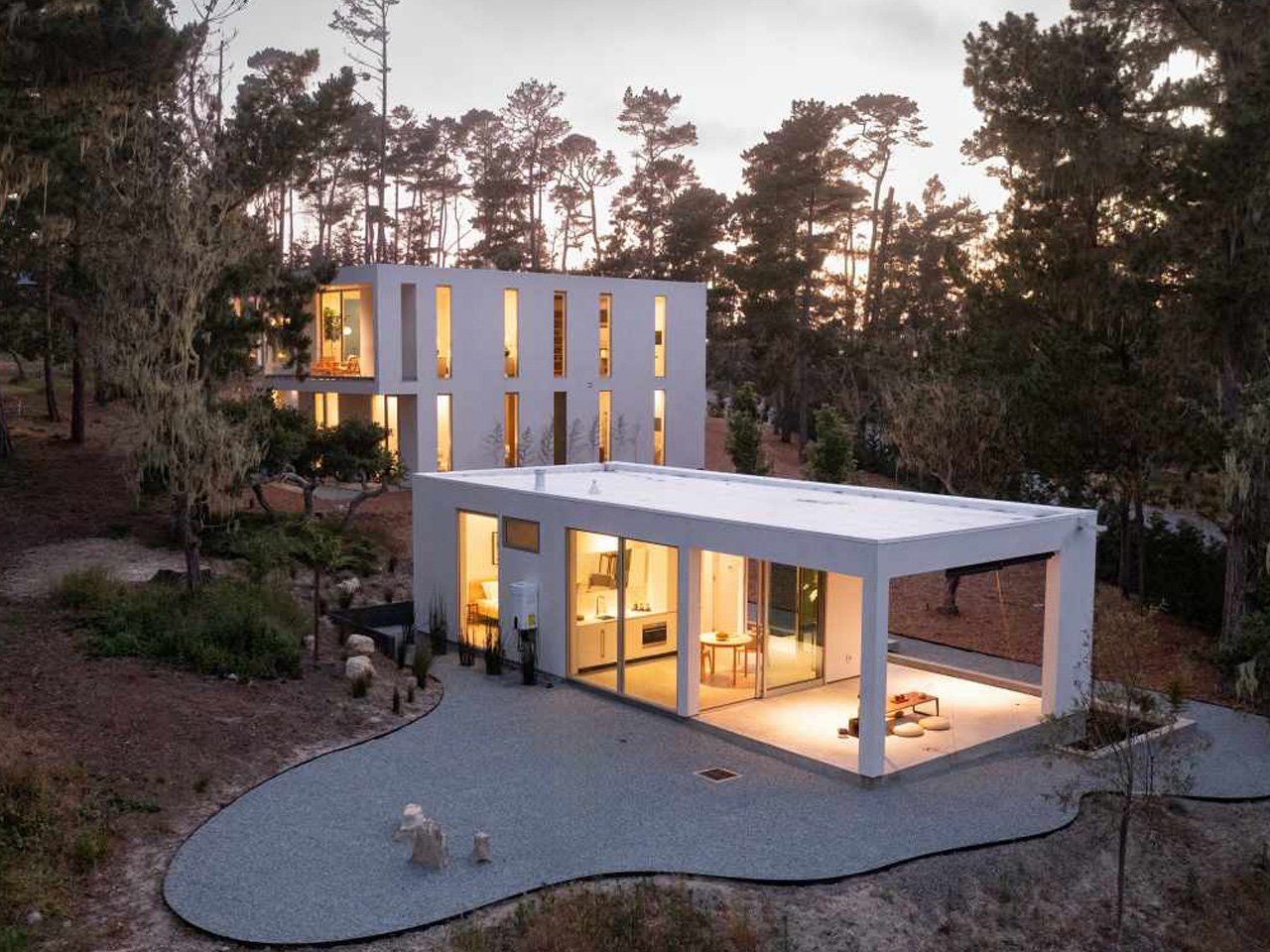The Waterbridge House shows us what it means to live both inside and out. Set amid the pines of Pebble Beach, this glass-clad sanctuary floats above the landscape, a calm, geometric silhouette that is as much an homage to nature as it is a feat of architecture. Designed by a local artist, the home’s spirit is rooted in the Japandi style, where Japanese calm and Scandinavian restraint meet the warmth of the California coast.
Staggered concrete steps emerge from the hillside, guiding you toward the house’s signature feature: a glass corridor that bridges a tranquil pool. This floating link is more than an entryway. It’s a threshold—a moment of pause between the everyday and the restorative energy within. The two wings that it connects speak to both privacy and togetherness.
Designer: Emily Yang Bauer
One wing features a spacious open-plan kitchen, living room, and dining area—perfect for gatherings and everyday living. The opposite wing is dedicated to privacy, offering a primary suite that opens onto a generous deck, a separate den or office, and two additional en-suite bedrooms. Below the common area, a separate guest suite with its own kitchenette and private entrance provides comfort and autonomy for visitors.
Waterbridge House’s minimalist form delivers a thoughtful complexity. The facade is a study in contrasts: bare white stucco, punctuated by vertical frameless windows, melts into entire glass walls that slide open to expansive decks. The effect is seamless. Indoors and outdoors blend, and natural light pours through the space, transforming at every hour. Here, the forest is never just a backdrop—it’s invited in, echoing along every surface and reflecting off the pool below.
Central to the home’s philosophy is its relationship with water and landscape. The glass corridor doesn’t only serve as a bridge – it is a calm vantage point, suspended between sky and pool, framing the shifting patterns of light and shade. It’s no wonder the house earned its name: Waterbridge. On quiet mornings, you might cross this bridge with coffee in hand, watching fog drift between trees and sunlight skip over ripples below.
The inspiration for Waterbridge House traces back centuries and continents. The staggered layout and bamboo-accented calm draw from the Cui Linglong, an 11th-century building in Suzhou, China. That legacy is felt most strongly in the home’s floating tea house—a conceptual pavilion accessed by its own set of concrete steps, perfect for contemplation or quiet gatherings. This gentle nod to history grounds the home’s modern lines, adding a layer of serenity and depth.
The house is blessed with light-filled spaces and a connection to nature, creating an atmosphere that is both calming and invigorating. The design offers privacy without isolation, and the floating glass bridge is a daily reminder of the home’s unique vision. The few cons—perhaps a less urban location or a minimalist palette that may not suit maximalist tastes—are far outweighed by the sense of peace and spaciousness.
The post Japandi-Inspired Home Showcases Floating Teahouse, Glass Bridge, & Sunlit Spaces In California first appeared on Yanko Design.

